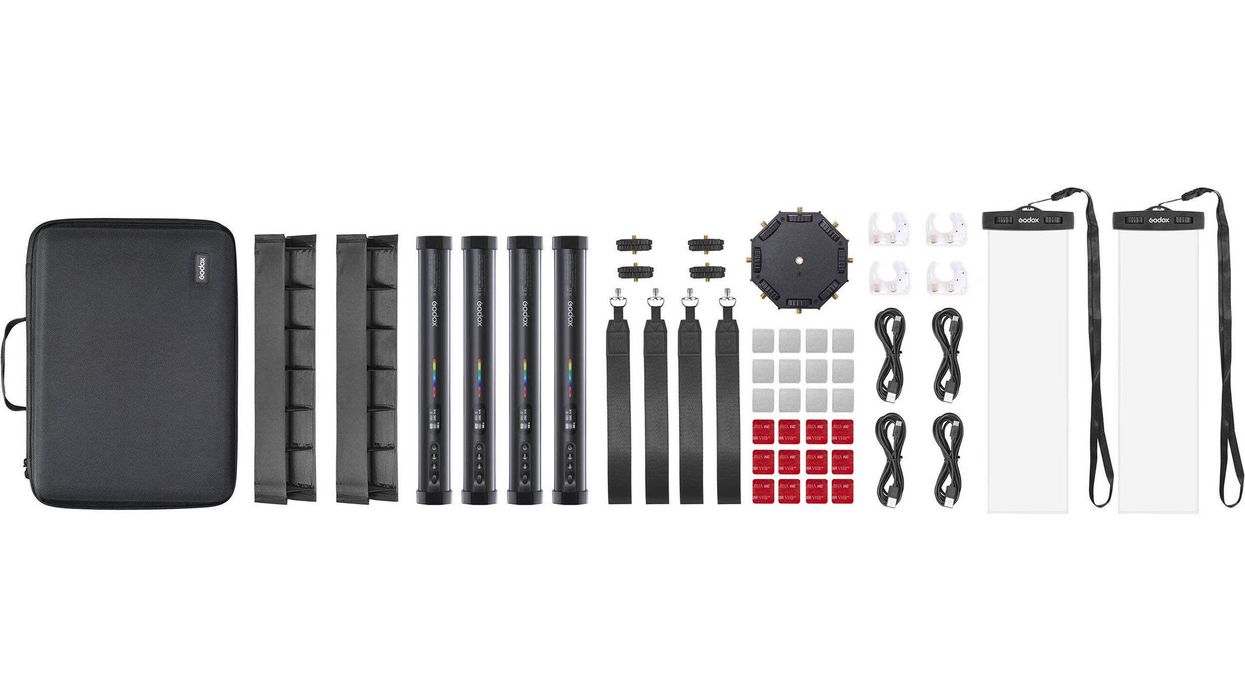Ideal for still and video applications, the TL30 RGB LED Tube Light Kit offers four compact 1' tube-shaped lights that are well-suited for in-camera practical effects and hiding in small spaces. It fits almost anywhere while features tons of colors, 0 to 100% dimming, and a vast array of multicolor creative effects. They also battery-powered and output up to 740 lux at 1.6' at 100% brightness, run for one hour at full power, and recharge or operate via a USB-C port from any USB source.
Meet Your Pro Shooting Demands With Godox's Latest Cinematic-Grade Parallel Beam Lights
Let’s look at the latest lineup of cinematic-grade parallel beam lighting solutions from Godox.
Dec 11, 2024
The Godox Cinematic-Grade Parallel Beam Lighting System has welcomed three new members: the BeamLightMax60, the B60, and the Parallel Beam Booster DL5—all of which you can check out here.
Let’s look at these latest additions to the Godox Cinematic-Grade Parallel Beam Lighting System and explore how they’re set to be more powerful and complete for all of your video shooting needs than ever before.
Whether you are shooting in a studio or on location, the Godox parallel beam system will meet your demands of professional shooting!
Max60/B60: Compact and Lightweight, Efficient Shooting
Featuring advanced optics and precision engineering, the Max60 and B60 are here to deliver a narrow beam angle and powerful, efficient parallel lighting. Compared with Beamlight Max90, the B60, and Max60 are lighter, weighing only 10 kg, making them lightweight enough for one person to carry and easy to set up.
Also, with tough protective housing and seamless integration with KNOWLED lights, including future models, they can enhance light control and efficient long-distance natural light replication. The B60 pairs with KNOWLED M600R and future Bowens-mount lights, while the Max60 is designed for G-mount fixtures, delivering focused, punchy beams on set.
DL5 Parallel Booster: Unlocking the Potential of the S60Bi/D
Now, this DL5 Parallel Booster is designed for use with the S60Bi/D Focusing LED Light, the DL5 Parallel Booster is set to increase center light intensity to deliver a concentrated and powerful output that elevates your lighting setup. Its 5° narrow beam ensures focused, high-intensity lighting, while the premium glass lens improves light efficiency and reduces light loss for higher output and more even light distribution. The honeycomb design reduces stray light, and the light shield ring prevents leakage.
Parallel light sources take LED lighting to the next level by boosting throw distance and brightness, making them useful in even more scenarios. When combined with the LiteFlow mirror system, they make the most of every beam, problem-solving for tackling high-elevation setups or working in tight spaces. It’s a game-changer that redefines what LED lights can do on set.
High-Power LED Lights + BeamLight Max90/60/B60 + LiteFlow System
Next, let’s look at the combination of high-power LED fixtures with BeamLight reflectors. The LiteFlow system offers an innovative solution for difficult setups. A single light positioned low can bounce its beam off a LiteFlow reflector to illuminate subjects even on the 30th floor—no need for cumbersome rigging. This setup not only simplifies logistics but also enhances on-set safety by reducing physical risks during high-elevation lighting installations.
SL60Bi/D + DL5 + LiteFlow System
Finally, for those in constrained shooting environments, this setup allows a single light source to be redirected several times to form multiple light points from just one fixture, minimizing the need for extra lights and modifiers. It empowers filmmakers to craft dynamic lighting designs even in the most limited spaces.
For more information, you can visit the Godox website here.
Keep ReadingShow less
True












